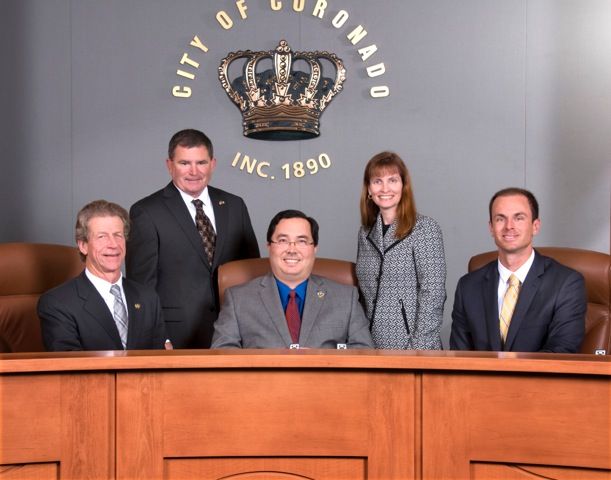
Over than 100 people crowded the council chambers on Tuesday. Most were in attendance because of a decision in June to fund a feasibility study for a multi-use path along Ocean Blvd or as it has come to be known “a bike path on the beach.”
As people lined up to speak, it quickly became clear that the majority were opposed to the idea funding something that had not been fully discussed. “You have put the cart before the horse”, Virginia Anderson said.
When Mayor Casey Tanaka asked people how many opposed the study 80 hands shot up. Only three people raised their hands in support. The council voted five to zero to take up the issue at it’s September 1 meeting.
The council originally voted to fund study because it was looking for a way to alleviate traffic problems on Ocean Blvd. “There’s a lot of congestion, it’s difficult to get up and down Ocean,” Councilwoman Carrie Downey said.
She made the request to reconsider her vote after the public outcry made her realize the issue had not been fully vetted.
Councilman Richard Bailey, who also requested reconsideration, shouldered much of the blame for the outrage. He and Tanaka included the feasibility study on the Capital Improvement Projects (CIP) list at the request of the Bicycle Advisory Commission.
“We did not do a good job of telling staff what we want to accomplish,” he said. “We owe it to public, to staff, and the city council to reconsider this at next meeting.”
The kerfuffle over the “bike lane” study not only brought out people opposed to the path, but also people who wanted to scrap the whole bicycle program, including painting bike lanes and sharrows (shared lane pavement markings) that was approved on April 21. “It’s going to be on your street,” Christine Donavan warned. She urged people to join the Save our Streets campaign.
Some believed the city was acting on behalf of tourist and a handful of bicycle enthusiast when it approved money for the study. “You can welcome visitors, but you can’t let them dictate what we do with our money,” Virginia Anderson said.
To proponents the idea was safety not tourism. “The beach area is rather unsafe. Something needs to be done there,” Nate Shike told the council.
When the ad hoc bicycle committee formed their primary goal was safety and to “find better ways to get along using our infrastructure,” Councilman Mike Woiwode said. The plan was crafted after dozens of public meetings a two public workshops, May 26, 2010 and November 30, 2010. Both were well attended.
It was approved unanimously by the city council at its February 20, 2011. Since then the city has been implementing components of the plan incrementally, with each phase subject to council approval.
This project took a surreptitious route with little public notice. It was in the bicycle master plan’s appendix and then five years later appeared out of the blue on long list of capital projects. Many residents felt blindsided.
The public reaction shocked the mayor. In 13 years in office, he claimed to never have fielded a single question about bicycles. “I’m stunned,” he said. “I’ve never seen a backlash like this before.”
He cautioned people that even if the money was rescinded and the study abandoned, the congestion on Ocean Blvd would continue. “Today’s action is easy. It will be easy on September 1st, after that the decisions will be harder.”
In Other Action
The council upheld the historical resources commission (HRC) denial of historic status for a storybook-style house at 733 Tolita Ave. Mayor Tanaka argued that the house didn’t meet the criteria proponents had sited for historic designation. It wasn’t built by a notable architect and did not resemble a storybook architectural style.
Councilman Bill Sandke thought it did. “I must be wearing the wrong set of spectacles, or a different set of spectacles, I do find the house to fit the storybook style.” The vote was 3-2 with Sandke and Woiwode in the minority.
Claytons’ conditional use permit that allows it to have outdoor dining was extended for one year, not the four it requested. Woiwode, who pulled the item from the consent calendar, wasn’t impressed with the restaurants efforts manage an outdoor dining area thus far.
He pointed to the staff report that noted the installation of request took longer than expected and that the restaurant did not comply with requests to clean up spills or meet insurance requirements in a timely manner. The vote was five to zero.
The council also approved $5.7 million to build a new senior activity center. Most of the money, $4.1 million, will come from the Harpst fund; the rest from the city’s general fund. The was also some talk of naming the facility after Frances Harpst, the heiress who bequeathed the city $14 million in 2010. “It was an unprecedented donation. This is a wonderful project to put money towards,” Tanaka said.
Suzanne Popp, owner of Advanced Cosmetic Dentistry, was appointed to the Parks and Recreation Board. She will serve out the reminder of Commission Scott Chasin’s term.




